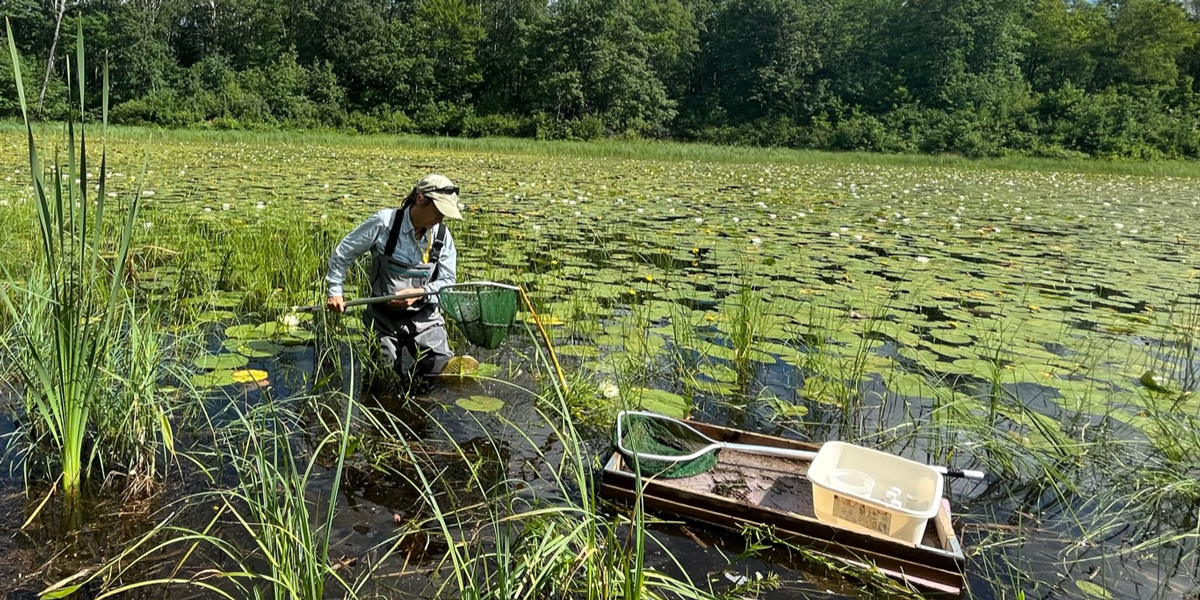
Wading in fish-free ponds is not for the faint of heart. Predaceous insects lurk under water lilies, searching for prey. In this murky, alien world of tadpoles, amphipods and algae dwells a predaceous insect with lots of admirers, including Dr. Emily Schilling, dragonfly enthusiast and associate director of the Itasca station, who spends lots of time in aquatic ecosystems where fish aren’t the top predators.
“Dragonfly nymphs are so cute,” says Schilling, “and they thrive in these systems that lack predatory fish.” Her fascination with dragonfly life cycles and the ecology of fish-free ecosystems led her to become the first scientist to document the migration of a common dragonfly species called the Canada darner (Aeshna canadensis). She is studying when and where they’re traveling.
To investigate, she and a team of dedicated field techs collect Canada darners at nearly every stage of their life cycle. As adults, the wings of these full-fledged, glimmering aerial predators hold chemical clues about where they were born. Chemical signatures assimilated by young nymphs persist in their bodies after they have emerged to become aerial adults. Scientists can match these signatures — called hydrogen isotopes — to specific latitudes using isotope “maps.” Schilling has identified Canada darners that have flown as far as 500 miles from the ponds where they emerged.
Catching adult darner dragonflies requires a lot of hand-eye coordination. To demonstrate her point, Emily pulls up a photo of a field technician holding a bug net in one hand (for catching adults) and a dip net in the other (for sampling aquatic nymphs). “You always have to be on the ready to catch one as they happen to zoom by,” Schilling explains. Sampling tenerals — dragonflies that have just emerged from their final aquatic instar — is a much more peaceful process but requires careful planning to catch them as they emerge.
“As far as the aesthetic of the ponds we study, they are just really beautiful,” says Schilling, describing an elegant array of water lilies floating gracefully on water that’s crystal clear “until you mess it up with your waders!” A chorus of birds and frogs sings nearby. “There’s just so much life under the surface that we don’t see unless we look.” — Adara Taylor